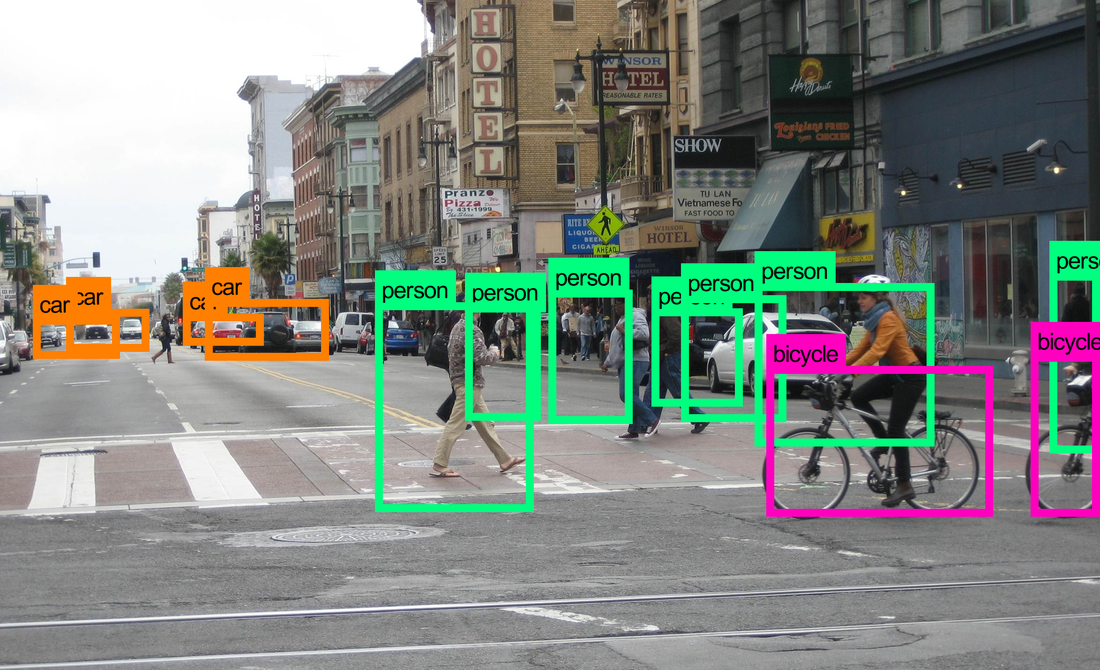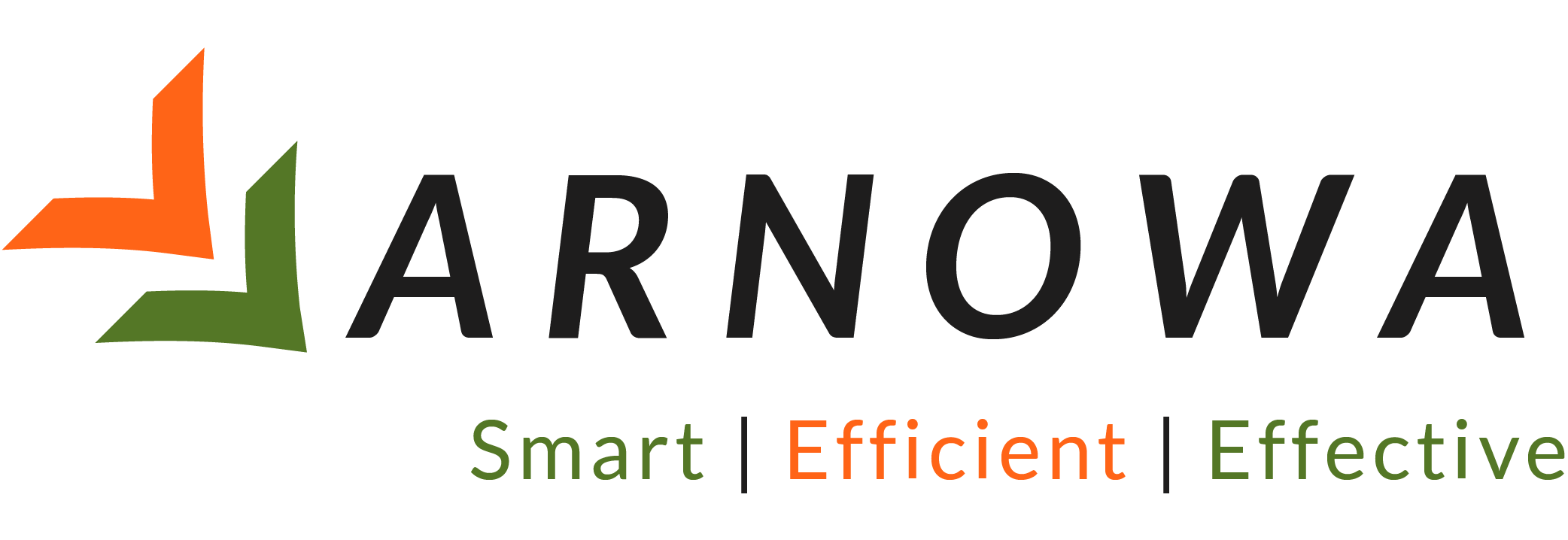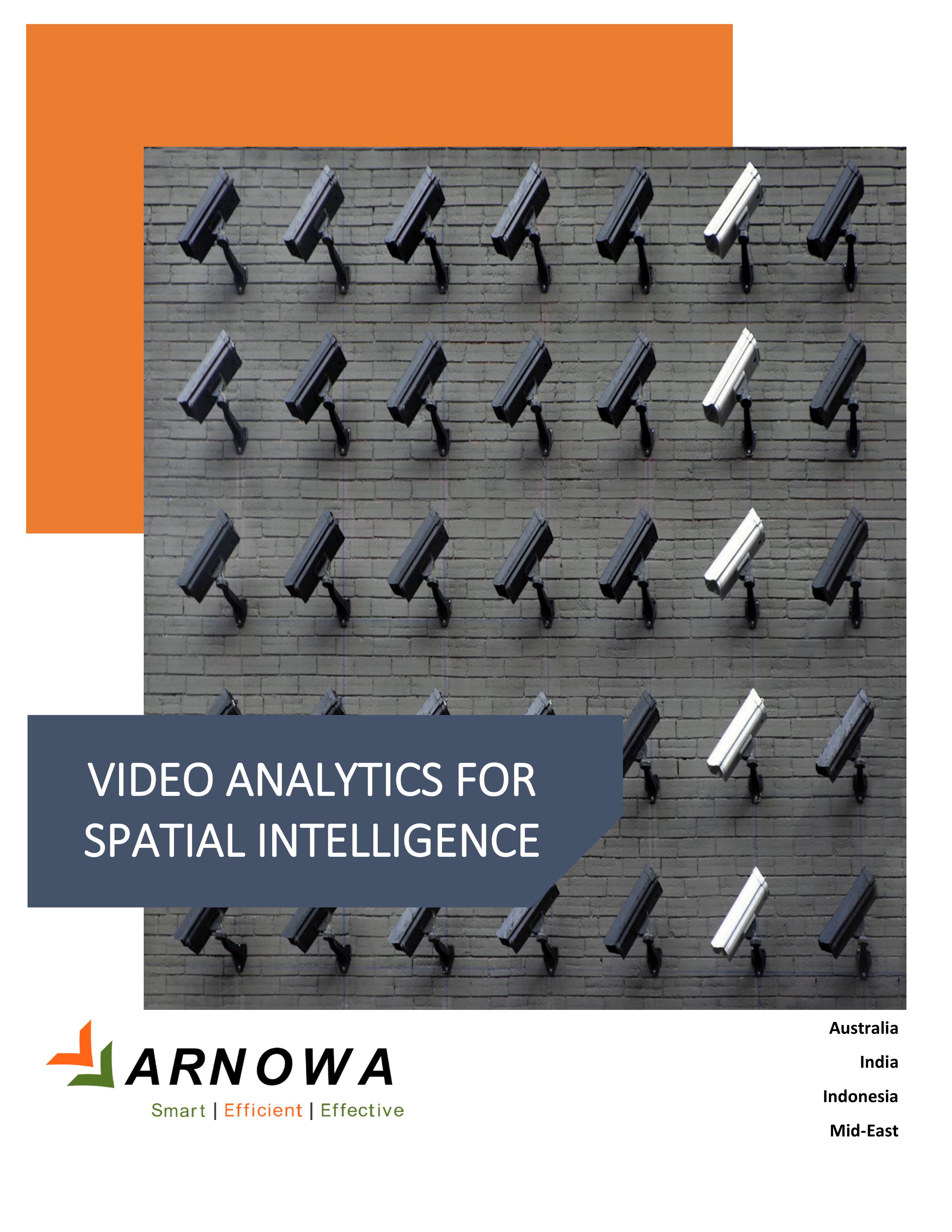Video Analytics for Spatial Intelligence
INTRODUCTION
One of the wealthiest sensors for gathering information is a Closed Circuit Television (CCTV) because the video contains in-depth information embedded, which can be utilized efficiently to get a better insight into a place or event. Video analytics finds different applications in a different organization, it may be used by security personal to control crimes or to identify criminals, businesses may use it to monitor their manufacturing units and their employee, cities may use it to control traffic. It has many applications with lots of advantages, and that’s why the video surveillance and analytics market is booming and expected to reach $68.34 billion by 2030, which was about $36.89 billion in 2018[1]. The rapid proliferation in the number of CCTV installations worldwide, in areas such as shopping centers, underground stations, and airports, has expedited the demand for automatic methods of processing their output because human operators cannot effectively monitor large numbers of cameras for long periods. This has generated significant interest in machine vision-based systems that can augment human operators. Intelligent filters have been developed that direct the operator’s attention to cameras observing events that are of interest, as well as assisting the operators in tasks such as tracking individuals through a shopping center.[rml_read_more]
Some limited automated analysis of CCTV images has been deployed over wide areas, such as the Automated Number Plate Recognition systems in use to enforce congestion charging in London, average speed limits through roadworks, and generally throughout Britain’s national road networks. Interest from law enforcement and private security in automated capabilities for CCTV systems, either to replace fallible and limited human operators or to enhance both live and post-hoc investigative use of visual surveillance systems, is significant. Research is being conducted in computer vision, which addresses the fundamental capabilities needed for automated CCTV analysis and for translational research on integrating new algorithms and approaches into a complete back-end system ready for integration into deployable CCTV operating systems.
CCTV deployments may involve a single camera, but most include multiple cameras, the aggregation of the field of view of all connected cameras forming the surveillance area of the system. The cameras are fed into a control room in real-time and monitored by one or more operators. The images from each camera are usually archived, allowing an operator to retrieve imagery (for example, to provide evidence for a criminal trial) at a later time.
In this article, we will discuss the scope, importance of video analytics, and their working.
SHIFTING FROM REACTIVE TO PROACTIVE SURVEILLANCE

Arnowa’s smart alerts provide near real-time notifications of safety, security, and operational events such as:
- Strolling of people and vehicles
- Entering restricted areas
- Objects moving in the wrong direction
- People or vehicles on train tracks
- Vehicles parked in the drop off areas
- Cyclists on the sidewalk
- Dodging of fare and toll
TRANSFORMING VIDEO ANALYTICS THROUGH DEEP LEARNING
Deep learning is a new computer model in which neural networks are trained to recognize patterns from massive amounts of data. Arnowa harness deep learning to advance the breakthroughs it had already made using computer vision to transform how the video was being reviewed and analyzed.
Capturing and unlocking the immense store of data in the video requires processing power. Arnowa uses advances in GPU technology, which exponentially accelerates its performance and precision of solution. Processing breakthroughs continue to bring up new advancements in speed and capabilities.
COMPUTER VISION AND DEEP LEARNING
Powerful computer vision and deep learning technology empower Intelligent Video Analytics to analyze live video streams to quickly identify and examine potential issues, anomalies, or particular events of interest. Designed to help commercial and public organizations better use video to improve infrastructure efficiency and safety, Intelligent Video Analytics automatically transforms raw video into enriched, searchable, structured data. Intelligent Video Analytics can help users to quickly highlight potential subjects and objects of interest, detect or track patterns, observe heat maps and anomalies in video footage, and deliver rapid reactions of subjects or objects.
TRANSFORMING VIDEO ANALYTICS THROUGH DEEP LEARNING
Deep learning is a new computer model in which neural networks are trained to recognize patterns from massive amounts of data. Arnowa harness deep learning to advance the breakthroughs it had already made using computer vision to transform how the video was being reviewed and analyzed.
Capturing and unlocking the immense store of data in the video requires processing power. Arnowa uses advances in GPU technology, which exponentially accelerates its performance and precision of solution. Processing breakthroughs continue to bring up new advancements in speed and capabilities.
COMPUTER VISION AND DEEP LEARNING
Powerful computer vision and deep learning technology empower Intelligent Video Analytics to analyze live video streams to quickly identify and examine potential issues, anomalies, or particular events of interest. Designed to help commercial and public organizations better use video to improve infrastructure efficiency and safety, Intelligent Video Analytics automatically transforms raw video into enriched, searchable, structured data. Intelligent Video Analytics can help users to quickly highlight potential subjects and objects of interest, detect or track patterns, observe heat maps and anomalies in video footage, and deliver rapid reactions of subjects or objects.
HOW ARNOWA’S VIDEO ANALYTICS WORK?
As Arnowa’s video analytics system processes raw video, it simultaneously:
- Recognizes the situation of the entire scene and its background.
- Tracks, detects, extracts, and classifies every item.
- Creates a structured database of information out of the video data for granular search, compressive reports, and smart alerting.
- It is packaged into an easy to use, a powerful video analytics solution that transforms video surveillance into actionable intelligence.
HOW ARNOW’S VIDEO ANALYTICS SOLUTION IS DIFFERENT?
- Edge Centric– Most of the data are stored at the edges, only the filtered and relevant data is received at the cloud.
- Low Data Traffic– Filtering data the edge allows users to reduce data congestion by sending only relevant information to the cloud.
- Faster Local Processing and Data Acquisition– Arnowa’s edge processing and computing empower faster processing and filtration of the data.
- Complete Ecosystem– Once you wish to use Arnowa’s service, you need not worry because we provide an entire ecosystem from hardware to firmware and machine intelligence to real intelligence.
PROVIDING HIGHLY FLEXIBLE AND SCALABLE SERVICES
The requirement of the video surveillance system varies from customer to customer and premise to premise, so we have developed a highly flexible architecture to address every scenario according to the requirement. Some of the service s are delivered via the cloud, support for a few users or full departments, to some access is provided via desktop, web, or mobile applications, video sourced internally, or collected from a wide variety of external sources. With a multitude of options, customers can design a solution that fits their needs and scales effortlessly.
OUR OFFERINGS (HARDWARE & SOFTWARE)
- Motion Sensors– It determines the path and speed of the moving objects.
- CCTV camera- This device records video of high resolution and quality, making video analytics easier.
- Wireless Data Transmission Devices (Nodes, Gateway, Edge)- These devices store and transmit data to the cloud safely.
- Arnowa Application Software- It helps in the monitoring and visualization of data.
- Video Analytics Support (real intelligence)- Our highly qualified and experienced intelligence team converts the video data received from the cameras into usable and meaningful trends.
BENEFITS OF USING VIDEO ANALYTICS
- Prevent criminal activity: Studies suggested that using CCTV in car parks resulted in a 51% decrease in crime; in public transportation areas, a 23% decrease in crime; and in public settings, a 7% decrease in crime. Even the lowest figure, 7%, is a significant improvement[2].
- Peace of Mind: A camera system provides people with an increased sense of security and reassurance, particularly in areas where the crime rate is high. Many of the more sophisticated models are wireless, meaning they can be viewed and monitored from your smartphone or tablet.
- Cost-Effective: A CCTV system is a cost-effective form of security. Once the system has been installed, they are very easy to maintain and require little reparations. Ensure that your cameras are cleaned in order to receive the best performance from your system. CCTV systems will keep your premises secure for years.
- Crowd Management:Crowd detection, queue management, people counting, people scattering, people tracking.
- Traffic Management:Vehicle classification, traffic monitoring, license plate recognition, road data gathering
- Multi-Dimensional Search: Sophisticated multi-camera search can powerfully distinguish men, women, children, and vehicles precisely with their speed and, using face recognition, appearance similarity, apparel, color, size, speed, path, direction, dwell time and illumination change filters.
- Appearance Similarity: Instantly locate people, vehicles, and other items of interest by searching for objects with similar attributes.
- Real-Time Alerts: Trigger real-time, rule-based alerts by face recognition, vehicles, people of interest, and object count in time-sensitive situations.
- Smart Alerts: Respond to complex situational changes in the environment while effectively balancing sensitivity, accuracy, and efficiency.
- Face Recognition: Powerful real-time Facial Recognition capabilities provide best-in-class face matching to rapidly pinpoint people of interest using digital images extracted from the video or from external sources.
REFERENCES
[2] Welsh, B.C. and Farrington, D.P., 2009. Public area CCTV and crime prevention: an updated systematic review and meta‐analysis. Justice Quarterly, 26(4), pp.716-745.
[3] Sumit Gupta, 2018. Deep Insights with AI for Video Analytics. Link: https://medium.com/@sumitg_16893/deep-insights-with-ai-for-video-analytics-5464fd30ebe1


